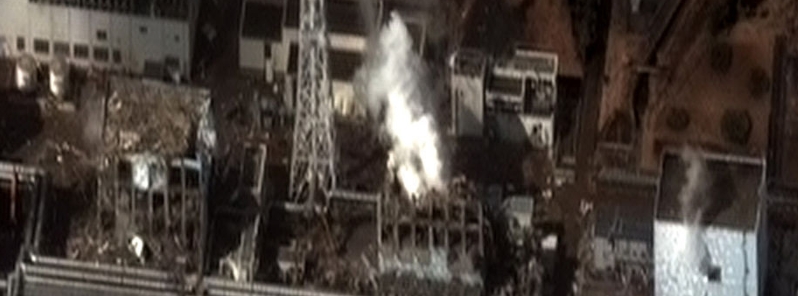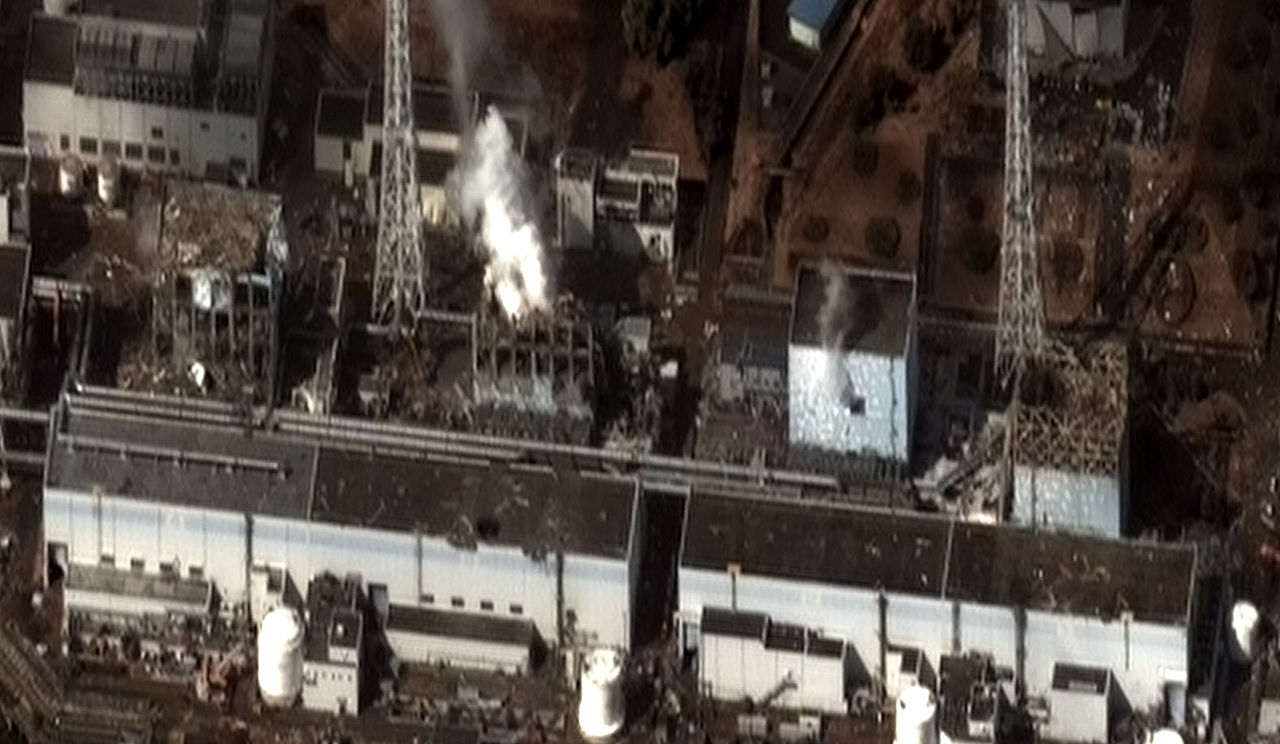Radiation levels at Fukushima plant found worse and more lethal than previously assumed

Radiation at the Fukushima No. 1 nuclear plant is far worse than previously thought, with the levels estimated at 10 sieverts per hour– a fatal dose for anyone who stays in the vicinity for an hour, according to experts. This means it will be extremely difficult for crews to move shield plugs, raising concerns that the plan to decommission the reactors will have to be reassessed.
Exceedingly high radiation levels inside crippled reactor buildings at the Fukushima No. 1 nuclear plant were described by nuclear regulators as an "extremely serious" challenge to the overall decommissioning of the site.
According to the Nuclear Regulation Authority (NRA), a huge amount of radioactive materials had attached to shield plugs of the containment vessels in the No.2 and No. 3 reactors.
With an estimated 10 sieverts per hour, the radiation levels are fatal for anyone who stays even an hour in the area. The finding also means that it would be extremely difficult for workers to move the shield plugs, which raised the prospect that the decommissioning plan will have to be reassessed.
Removing the highly contaminated shield plugs added to the challenge of recovering unclear fuel debris– the most taxing part of the process, said NRA chairman, Toyoshi Fuketa.
"It appears that nuclear debris lies at an elevated place," Fuketa said at a news conference in December 2020. "This will have a huge impact on the whole process of decommissioning work."
At normal times, the shield plug blocks radiation from the reactor core. Workers remove a shield plug to get access to the containment vessel's interior when unclear fuels need to be replaced.

The Fukushima I Nuclear Power Plant after the 2011 Tōhoku earthquake and tsunami. Reactor 1 to 4 from right to left. Image credit: Digital Globe
In a study that resumed in September after a five-year hiatus, the NRA conducted fresh measurements of radiation levels in the surrounding areas of the No. 2 and No. 3 reactors.
It found that the amount of radioactive cesium 137 was at 20-40 petabecquerels between the top and middle layers of the No. 2 reactor's shield plug. This works out to more than 10 sieverts per hour– radiation at these levels can be fatal to a person if they spend an hour in the vicinity. Meanwhile, the estimated figure was 30 petabecquerels for the No. 3 reactor.
The 2011 earthquake and tsunami disaster in Fukushima caused the shield plug of the No. 1 reactor to slip out of place. It was also damaged by a hydrogen explosion at the reactor building.
As larger amounts of cesium 137 leaked from the No. 1 reactor through the damaged plug, the amount of radioactive material was estimated at 0.16 petabecquerels, lower than for the No. 2 and No. 3 reactors. On the other hand, the shield plugs, for the No. 2 and No. 3 reactors remained secure.
The Tokyo Electric Power Co. (TECPO) announced that the removal of nuclear fuel debris will be moved to 2022 or later, rather than the initially planned operation in 2021, due to a delay in the development of equipment.
Featured image credit: Digital Globe

Could nuclear activity of such incidents as Nuclear Testing, World War II, Chernobyl, Fukushima develop a cause and effect of chromosome changes that explains gender identity issues LGBTQ as well as immune deficiency, cancer and other subtle mutations that associate distinct changes in human and animal biology – taking into account how particle matter would travel and subtract in different zones noting exposure and global weather patterns..
IT’S very concerning the current climate change situation surrounding the climate emergency has a go to reliance on nuclear power as if the entire anti-nuclear movement folds away in the process there are
pro-nuclear organisations with free reign on future energy plans.
Nuclear Technology should no longer be able to declare itself as “clean energy”!! research needs to be done to investigate ALL effects of genetic altering chromosomes.. Companies need to assume the position as “unknown” when it comes to the relative short term and long-term effects of nuclear incidents! We need to admit our earth is worth more than cheap energy!
With climate change seen as the greatest test for our planet going into the future, nuclear technology has been introduced as a solution to replace 100% of fossil fuels (In 2019, around 84% of global primary energy came from fossil fuels).
The production of nuclear power in theory resolves our production output requirements (currently at 10% globally) but this leaves a bold underlining question about its safety – our planet is unpredictable and the cleanup of nuclear technology after a crisis, incidental or natural is immeasurable that’s not taking into account the human element involved after a disaster – not to mention the fission material or radioactive waste in the production of nuclear power
More than 30 years on, scientists estimate the Chernobyl Exclusion Zone around the former plant will not be habitable for up to 20,000 years – on the other hand the 2012 Fukushima disaster clean-up is an ongoing attempt to limit radioactive contamination from the site which will take 30-40 years to decommission the plant let alone the actual toll on the environment
There is no guarantee on the safety surrounding nuclear technology – our planet in the modern era has been respectively quiet in terms of natural disasters, death tolls relate to a focused retrospective of the elements, not a multitude of things going wrong which is what would happen with nuclear power plants relied upon going forward.
Nuclear technology ATM it seems is determined by public perception – every incident has seen public perception increase on the nuclear debate and output has decreased on the back of poor publicity the
IAEA remains ready and waiting for the next wave of “badluck” to install debate
The Chernobyl Exclusion Zone stretches 2,800sq km.. have a look at your local area and get an idea on how big that is.. we currently have 450 nuclear plants in the world – nuclear committees are lobbying for 5000 to be activated right now!
There is no doubt the confrontation of nuclear design is dangerous! the application of human interference does not apply to incident or the natural element.. worst case scenario – instead of x-amount of people dying from a natural disaster the entire planet becomes uninhabitable.
https://stockhead.com.au/resources/nuclear-power-rises-with-shifting-political-tides/
Nuclear power rises with shifting political tides – Stockhead
Uranium producers are back in the spotlight as both the US and UK look to nuclear power to fuel their transition to a zero emission economy. In the US, pro-nuclear candidate Joe Biden’s nail-biting win over incumbent President Donald Trump is paving the way for the Democrats to introduce their US$2 trillion climate change plan.
stockhead.com.au
https://www.independent.co.uk/news/world/asia/japan-fukushima-radioactive-wastewater-ocean-fishing-industry-b988019.html
Japan facing looming decision on whether to dump radioactive Fukushima wastewater into ocean | The Independent
Japan facing looming decision on whether to dump radioactive Fukushima wastewater into ocean. Fishing industry representatives argue releasing water would damage their reputation
http://www.independent.co.uk
https://www.hakaimagazine.com/features/are-coastal-nuclear-power-plants-ready-for-sea-level-rise/
Are Coastal Nuclear Power Plants Ready for Sea Level Rise? | Hakai Magazine
Map by Carbon Brief. The interactive map above from Carbon Brief shows the location of nuclear power plants around the world. According to maps prepared by the World Association of Nuclear Operators (WANO), around one in four of the world’s 460 working commercial nuclear reactors are situated on coastlines. Many were built only 10 to 20 meters above sea level at a time when climate change …
http://www.hakaimagazine.com